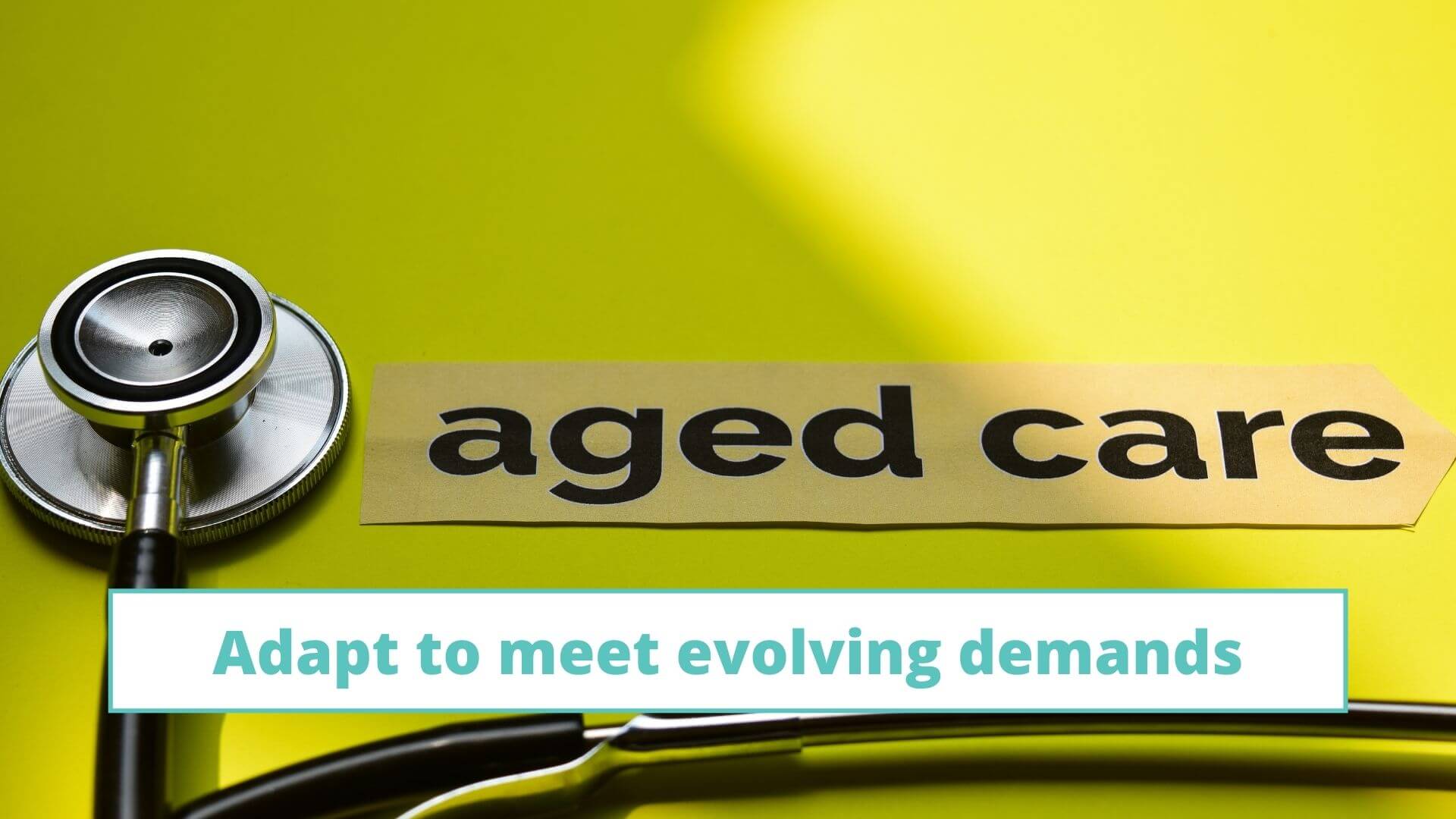Scout Talent Group’s in-house charity, Healthy Workplaces, is on a mission to raise awareness on the importance of activity during the workday. As well as contributing to physical and mental health, corporate wellness initiatives foster team engagement, camaraderie, social responsibility, and engagement with the wider community.
Since 2011, Healthy Workplaces has worked with organisations of all sizes to create inspiring workplace challenges that have a positive impact on their key strategies. Increase productivity, strengthen your employer brand, and boost morale with creative projects that speak to the needs of your team members.
Do you want to learn more about how Healthy Workplaces works with organisations to create competitive, fun and creative environments that drive your strategy?
In this webinar, Katie Redhead, Operations Leader for Healthy Workplaces, shares how corporate wellness initiatives can help you to drive your strategy around things like:
- Physical and mental wellness
- Team cohesion and camaraderie
- Client engagement
- Corporate giving
- Employer brand
The recording of the webinar (below) will inspire you to put a challenge in place at your organisation that will be highly engaging and that will have an impact in the areas of the business that you most want it to. A full transcript of the webinar audio can be found below.
Video of Corporate Wellness Initiatives Webinar
Video Transcript: Inspiration for Corporate Wellness Initiatives that Have an Impact
Katie Redhead 00:08
Hello, everybody, welcome to the webinar. My name is Katie and I’m the operations leader here at healthy workplaces. Thank you so much for joining me today. I’m excited to be spending 30 minutes with everybody to talk about creating corporate challenges that have an impact. So while this is technically a one-way session, I’m definitely keen to hear from you throughout both via the chat feature through q&a, and also through some live polling.
So to get us started, I’d love to hear from you in the chat feature and see who we have on the call today. So please do jump in and let us know your name, which state you’re dialling in from and even your organisation if you’d like. I’m keen to see who has joined us. And make sure you post your question to attendees and panellists when you do so.
Hi, Nicole. Hi, Fraser. Thanks for joining. Sorry, as everyone can see, by using the zoom webinar platform today. If you do have any questions throughout, you can utilise the Q&A window that is at the bottom of your screen. If you are experiencing any technical difficulties, please let us know via the chat feature. You can send those tech difficulties through to panellists only. And we have the wonderful Steve on hand to help you there. And we are recording today’s webinar so that you can refer back to this content at any time I will be sending through the recording and the slides later this afternoon. Great to see we’ve got some people joining from all over Australia, I hope everyone is doing well in the various lockdown situations.
Okay, so moving on. My goal for this session today is that we’re going to end the webinar with everyone who has joined feeling inspired and empowered to put a challenge into place at your organisation. And that is going to be highly engaging. And that’s going to have an impact on the area of the business that you want it to.
So as I mentioned, my name is Katie, and I’m the operations leader for Scout Talent in-house charity healthy workplaces. And a little bit about me, I have over 15 years of experience in event management, with the last two years of my career really focusing on how to deliver corporate challenges that create a work environment, which supports wellness, which supports team cohesion. And one that supports corporate giving. And by focusing on how to do this, it helps healthy workplaces to achieve our mission of raising awareness about the importance of introducing activity into the workday.
And really what better way for us to achieve that than by sharing our insights on what makes a great corporate challenge in forums such as this and with people such as yourselves who deliver these types of events in your own organisations. So I’ve seen on the call today that we have a number of HR, people and culture, and workplace health and safety professionals. And I’m very mindful of what busy roles you all lead. So if there’s any information that I can provide today that’s going to make achieving your, your wellness, your corporate giving goals more achievable, that I’m absolutely here for it. And that’s what this webinar is all about.
So from my experience, there are about five key reasons why an organisation is looking to host a corporate challenge. And these are going to appear on a poll on your screen in a moment when I launch that poll. So these options are the goals why people host a corporate challenge include to support the physical and mental wellness of your team to boost team cohesion and camaraderie to Engage with your clients in the community to increase your corporate giving results, or to improve your employer brand. So if you’d like to vote on what your goal has been with the last corporate challenge that you’ve run, or if you’re an upcoming challenge, I’d love to love to say that and you can definitely take more than one option because I know it’s common to achieve a number of these goals with one corporate challenge.
04:53
So we’ve got the majority of votes coming in there, with “to support the physical and mental wellness of your team” and “team cohesion and camaraderie” in a close second place there. But we do have people voting for all of the five different options. And we’ll be covering off today on why organisations are choosing to spend time and money on these focus areas. And we’re going to explain the benefits, I’m just going to share those results with you. Sorry, there we go. So, as I was saying, we’re going to be covering off today on why organisations are choosing to spend time and money on these focus areas and explain the results that they’re likely to say. And then throughout the webinar, I’ll be providing tips and tricks and inspiration on how you can design your next corporate challenge to ensure it has an impact on the area of the business you’re looking to improve.
05:57
Okay, we’ll start with keeping active in the workplace, which has definitely been in the spotlight for the past 12 to 18 months. And what we’ve known for years is that regular exercise is good for your body and for your mind. I think, you know, if you cast back- if you think about when you last did an exercise routine yourself and how that made you feel. But what’s really coming to light recently is more compelling evidence about the impact that regular exercise can have on a workplace. And we’ve got studies showing that employees who regularly exercise a happier in the workplace, they have higher levels of engagement. And when they’re at work, they’re more focused and they’re more productive.
I actually saw an article the other day that reported that people who have a regular exercise routine, are 50% more likely to be more productive in the workplace. So you can see why it’s worth adding exercise into the workday. The easy option at your organisation, or the done thing. Which, judging by that poll we just ran, you know, a lot of you are doing that.
So how can you do this? If your goal is to increase activity levels within your team, my first tip is to ensure that the challenge goal is achievable. So what I mean by this is that it’s important to ensure the goal of your challenge is realistic for most team members to achieve. And this really helps people to feel comfortable to get involved and therefore increases engagement in your initiative.
For example, we recently ran a challenge with an organisation that had team members based in various locations all around the world. And because everyone was experienced a different level of lockdown, we decided to reduce their challenge goal from the standard kind of 10,000 steps just down to 8000, to make sure that everyone felt motivated and engaged to get involved. Even if they were experiencing a level of lockdown that was restricting when and where they could exercise. We received some great feedback, that it helps people’s motivation.
And my second tip, if you’re looking to increase activity in the workplace is around communications, and to provide information throughout the challenge about how regular exercise can positively impact the people who participate.
So for example, you might like to report that if you add exercise into your workday, you’re more likely to report fewer sick days. And that’s a result of a boosted immune system, and also less susceptibility to stress. So reporting on the benefits of exercise throughout the challenge to keep people motivated and engaged is a great way to do that.
And my third tip here is to celebrate achievements. So it’s important to celebrate the achievements of not only the people who are doing the best (so your in house triathletes or marathon runners) but everyone who is getting involved.
So for example, you can celebrate people who are consistently getting active every day of the challenge, not only the people who are doing the best.
So to summarise my tips there if you’re looking to increase activity in your workplace, and you’re running a challenge to do that first tip is to set achievable goals. The second tip is to communicate the benefits of regular exercise. And the third tip is to celebrate achievements.
And I’d absolutely love to again, hear from you in the chat about how you encourage exercise in your workplace.
As we receive some of those chats through, I’d love to also talk about how a corporate challenge that focuses on increasing activity levels of your team is an awesome way to support your team’s mental health as well. And there’s also a raft of reasons why it’s good business to support the mental well being of your workforce. So by doing so, you can reduce the number of dissatisfied or disengaged team members, making it easier to recruit and retain the best.
So we’ve had a chat come through from Fraser, who’s mentioned that they’ve got a workout clothing policy. So if you plan on doing some exercise during the day, you can wear your gym gear instead of corporate gear for added comfort, that’s awesome. And think that would make it really easy to add some exercise into your lunch break or before work as well.
10:39
So a corporate challenge can be one part of a larger framework that can support mental well being in an organisation. So other parts of the framework might include things like connecting with team members through regular check-ins, raising awareness through learning courses, or providing support through an EAP provider.
But no matter how many parts of the framework exist in your organisation, adding in a corporate challenge to support team member’s mental health is an easy thing to do. And my tips for a challenge that is designed specifically to support mental health include communication again, so drip-feeding that information throughout the challenge, about how to support people who are struggling with mental health, how people can support themselves, and just to boost that overall awareness.
By sharing information in conjunction with a challenge, rather than simply through only an online course or something similar, it’s a much more engaging way to raise awareness about mental health and to remove any stigma around those types of conversations.
My second tip is to allow team members to have anonymity in the challenge. So while some people are comfortable with having their name and their results displayed on the group leaderboard, it’s also important to appreciate that some people may not want their results to be, you know, on the leaderboard and are quite happy to get involved out of the spotlight. So allowing anonymity is a great way to allow people who are experiencing anxiety around that to still get involved and reap the rewards of increasing their activity.
My third tip is to incorporate fundraising into your challenge, and you can choose a charity that aligns with your goal of supporting mental health. So, you know, you might like to choose Beyond Blue, or Lifeline or Black Dog Institute, and that charity will be able to provide some in-office materials, which can be displayed during the challenge. And, and team members can celebrate their contribution to a great cause while getting involved in as in an event that supports their own mental health.
So to summarise my tips for a corporate challenge, to support mental health is to raise awareness through drip-feeding information throughout the challenge, to allow anonymity in the challenge, and also to engage in some charity partnerships.
So while we’re on the topic of partnering with charities, I’m keen to hear what charity has everyone’s organisation most recently supported, or what charity would you love to support. And you might like to say what they do there in the chat. This will tie in very well with our next section.
You can see here and this is a picture from a challenge that we recently ran with Scout Talent, who was supporting RSPCA. And we had the lovely Spot come in for a visit one day.
Cool. So we’ve got some awesome charities coming through here on the chat. So we’ve got an organisation supporting Cancer Council, Starlight. Oh, hello, Bob. Hello. Good to see you online. And I’ve got we’ve got some team members who do Movember every year. So there’s such an awesome array of charities that are being supported there.
I bring this up because corporate challengers are a great way to raise money for a cause that is close to your heart. And not only can you support an awesome cause, but corporate challenges can do wonders for your brand’s reputation with your clients, your prospects, team members and the wider community.
So if your organisation is looking to boost your corporate giving results through a challenge, my tips are when selecting the challenge, make sure you put it to a group vote. So you can ask the team what charity they’d like to raise money for. And by giving everybody a say, you can ensure that the majority of people are connected to the selected cause. And that will really boost your fundraising results.
My second tip is to engage the charity. As I mentioned before, they’re going to have a raft of resources available for you and the team to use to help achieve great fundraising results. For example, they can often provide dollar handles with you so that the team can understand how the money raised will actually be used. And they often came to visit the workplace to share their mission and vision.
15:39
And finally, my last tip is to celebrate and reward top fundraisers in your organisation. So, you know, you might like to set up a prize for the top one or two or three fundraisers in your organisation to help get those efforts going.
So again, my three tips for boosting corporate giving through a challenge is to one, set up a group vote on the charity that you’d like to raise money for. Two, engage that charity so that they can come and give you lots of resources and help in your efforts. And three, set up some prizes for the top fundraisers.
I’m just going to have a quick check to see if we’ve had any questions come through. Okay, well, looking good. So fast as a bit of a time check. We’ve spoken about how you can achieve your physical and mental wellness goals as well as your corporate giving goals. But before I move on to Team engagement, and how you can use all of this to boost your employer brand, and I just want to remind everyone that if you do have any questions, you can pop them into the q&a feature, and I’ll make sure I answer those at the end.
17:00
So while no organisation can enforce team cohesion and camaraderie, there’s certainly a benefit to an organisation that enables this type of culture. And what we know is that people who are part of effective teams will tend to work harder, they’ll be more productive through improved collaboration, communication and innovation. So this type of team structure will also reduce stress and workplace tension.
So if team cohesion is the goal, a really great place to start is to utilise your internal chat channel. So you might be using Slack or Microsoft Teams, or Chatter, but what you can do is really create a space where people can post about their experience with the challenge. And they can post pictures of their involvement, like the ones that you can see on the screen there now. They can celebrate their achievements, or they might even like to call out a team member to a bit of a challenge.
So it’s an awesome way to boost banter between people who are working in different offices or locations, like a lot of us are currently working from home at the moment in Australia.
So my second tip there to boost team cohesion is to ensure your challenge has the ability for people to join teams. So whether the teams are based on a business unit on a location, or perhaps people can just create teams themselves. It’s a great way to ensure team members are getting involved together. And the encouragement and the recognition from other team members will boost overall engagement in the challenge.
And my last tip here is to set group goals in addition to individual goals. So what I mean by this is a group goal could be something like virtually cycling or stepping around the country, or it could be raising a certain amount of dollars for a charity. But by aligning the team to a common goal. It’s a really great way to bring everyone together within that challenge.
So to recap, my three tips there are to utilise your internal chat channel to set up teams and to set a group goal. And as we move into our final section and wrap up for the day. Again, let’s pop into the chat. And I’m keen to hear from you about how your organisation supports a culture of teamwork. And I can see we’ve got a question coming through which I’ll make sure I answer towards the end.
19:46
So as we begin to wrap up, it’s important to make note of how everything that we’ve discussed today can have a fantastic impact on your organization’s employer brand organisations invest a lot of time and money and effort and resources into corporate challenges, and it’s worth celebrating your results with the world to strengthen your employer brand.
And while you can’t 100% control your employer brand, you can definitely shape it by hosting some engaging and fun events that celebrate your company’s values. So for example, if one of your values is about wellness, you can celebrate your ongoing commitment to supporting your team’s physical and mental health. Or if one of your values is giving back, you can post online about the results you’ve achieved for the charity of your choice. And that means that candidates who apply for roles within your organisation will be able to see how you’re living your values, and will be able to connect with the people and the culture of your organisation before they even start.
20:59
So there you have it, those are my tips on how to design a corporate challenge to ensure it impacts the areas of the business that you want it to. I hope everyone’s feeling inspired and empowered to put a challenge into place at your organisation.
We’ve had a question come through in the chat, which I’ll quickly answer. Someone’s asking how do we roll out a step- how do we roll out Step Forward to our people working from home? And how quickly can it be done? That can be done in- we can roll that out for you very quickly. So I know a lot of organisations are really struggling with people working from home at the moment. And so if you would like to run a virtual stepping challenge to achieve some of the goals that we’ve just spoken about, I’d love to speak to you about that. And we can get that up and running, you know, in a matter of weeks for your team there. So my contact details, I’ll put them on the screen soon. You’re absolutely welcome to give me a call and we can chat through that together.
And now I will just check the q&a. And so somebody has asked, “Do you have any tips for how to encourage more introverted team members to make sure it’s an all-around team camaraderie event?” Absolutely. So my tips here are that it’s a good idea to get the team’s input when you’re designing your challenge. So talk to them about when is a good time for them to do it. What type of activity would they like to do, and in what kind of format and that helps to get buy-in from as many team members as possible. And also, I will just go back to that point about anonymity that I mentioned earlier. If there’s a way that people can sign up with, you know, like a fun name rather than their real name, you might get some of those more introverted team members involved.
And so I think, by making some of these small changes that I’ve mentioned today, you can make sure that you’re getting the most out of the corporate challenges that you do run. And you’ll also likely create a workspace that allows people to bring their best selves to work, and who are valuable team members.
As I mentioned earlier, I’ll be in touch later this afternoon to share the slides with you. And in the meantime, once you jump off this webinar, I encourage you to write down one thing out of everything we’ve been through today that you’d like to implement in your next corporate challenge.
And if you would ever like to discuss corporate challenge plans, I’d love to chat with you. And my contact details are on the screen now and will also be included in the email that I send through this afternoon. Thanks so much, everyone, again, for joining me this afternoon and I hope you have a great day ahead.
23:47
Thanks!




